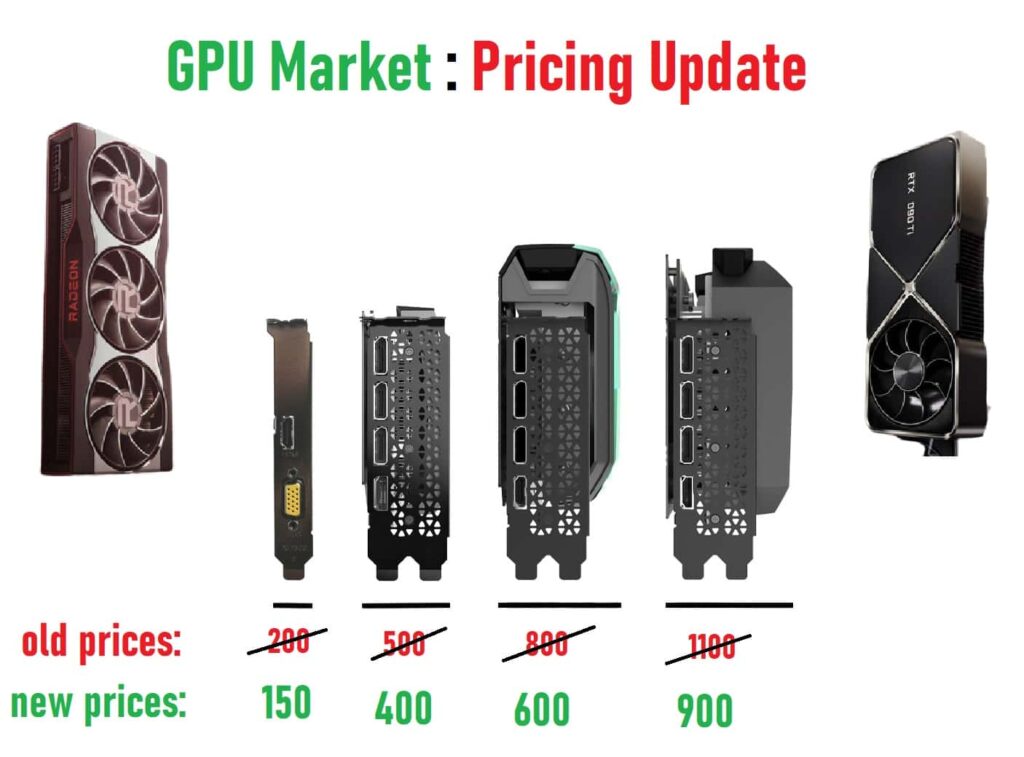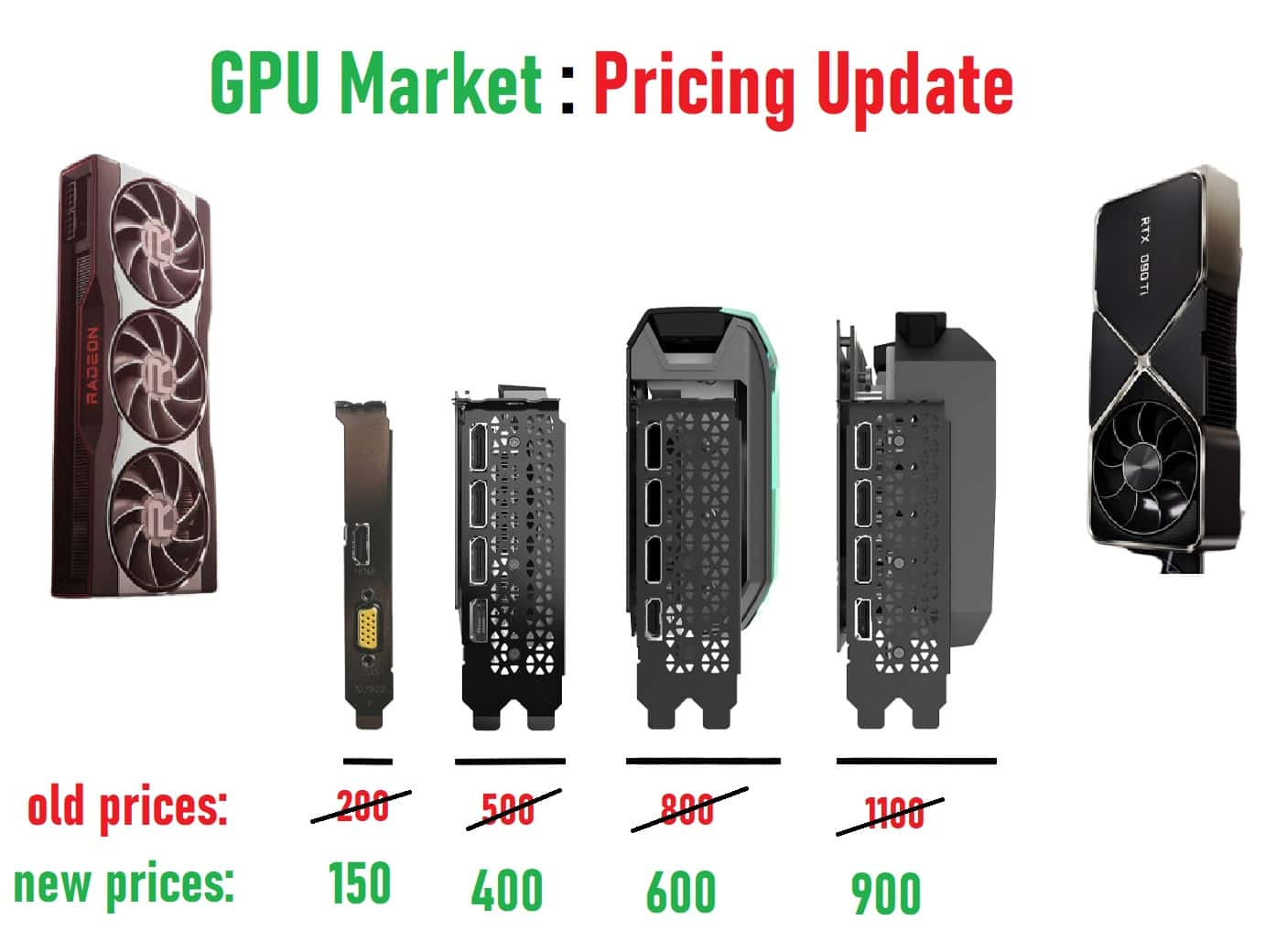In the world of gaming and graphics, the clash of titans is a recurring theme. And in this showdown, we have two formidable contenders: the Radeon RX 7800 XT and the GeForce RTX 4070. Buckle up as we take a deep dive into their performance, features, and value.


Test System and Benchmarking
Before we jump into the exciting world of gaming benchmarks, let’s take a quick look at our test system:
- CPU: Ryzen 7 7800X 3D
- Motherboard: Gigabyte X670E Aorus Master
- Memory: 32GB DDR5 6000CL30
Now, on to the main event: the benchmarks. We’ve conducted tests across three primary resolutions: 1080p, 1440p, and 4K, encompassing a total of 56 different configurations. Let’s break down the results, starting with the games.
Gaming Performance
Starfield: An AMD Edge
Our journey begins with Starfield, an AMD-sponsored title notorious for its less-than-stellar optimization on GeForce GPUs. Surprisingly, the Radeon RX 7800 XT emerges victorious, boasting a lead of 22% at 1080p, 23% at 1440p, and 24% at 4K. This is a clear win for AMD, particularly at lower resolutions.
| Resolution | RX 7800 XT Lead (%) |
|---|---|
| 1080p | 22% |
| 1440p | 23% |
| 4K | 24% |
Baldur’s Gate 3: Balanced Competition
Baldur’s Gate 3, a title sponsored by Nvidia, surprisingly runs well on AMD hardware. At 1080p and 1440p, the Radeon RX 7800 XT and the GeForce RTX 4070 deliver similar performances. It’s only at 4K that the 7800 XT manages to pull ahead by an 8% margin.
| Resolution | Performance Difference (7800 XT vs. 4070) |
|---|---|
| 1080p | Nearly identical |
| 1440p | Similar |
| 4K | 7800 XT leads by 8% |
Ratchet and Clank: Rift Apart: Nvidia Dominance
Ratchet and Clank: Rift Apart favors the GeForce GPU, delivering 13-15% better performance over the Radeon counterpart. The difference is most noticeable at 4K, where the 4070 goes from 49 FPS to 56 FPS.
| Resolution | Performance Difference (4070 vs. 7800 XT) |
|---|---|
| 1080p | 13% better (4070) |
| 1440p | 15% better (4070) |
| 4K | 15% better (4070) |
Cyberpunk 2077: Mixed Results
In Cyberpunk 2077, we see the 7800 XT leading by 9% at 1080p, 16% at 1440p, and a substantial 22% at 4K. However, when enabling ray tracing, the 7800 XT faces challenges, with the 4070 performing 57% better at 1080p.
| Resolution | Performance Difference (7800 XT vs. 4070) |
|---|---|
| 1080p | 9% better (7800 XT) |
| 1440p | 16% better (7800 XT) |
| 4K | 22% better (7800 XT) |
| 1080p (Ray Tracing) | 57% better (4070) |
The Callisto Protocol: A Competitive Race
The Callisto Protocol results show a competitive race, with the 7800 XT edging ahead by a mere 4-5% at 1080p and 1440p. However, at 4K, the 7800 XT secures a 19% lead. Ray tracing performance here remains competitive.
| Resolution | Performance Difference (7800 XT vs. 4070) |
|---|---|
| 1080p | 4% better (7800 XT) |
| 1440p | 5% better (7800 XT) |
| 4K | 19% better (7800 XT) |
| 1440p (Ray Tracing) | Competitive |
Fortnite: DirectX 11 vs. DirectX 12
Fortnite favors DirectX 11 for smoother frame times, particularly for competitive play. At 1080p, the 4070 leads by 26%, reducing to 15% at 1440p. However, at 4K, the 7800 XT takes a slight lead, suggesting that performance can vary depending on API usage.
| Resolution | Performance Difference (4070 vs. 7800 XT) |
|---|---|
| 1080p (DX11) | 26% better (4070) |
| 1440p (DX11) | 15% better (4070) |
| 4K (DX11) | 3% better (7800 XT) |
| 1080p (Ray Tracing – DX12) | 9% better (4070) |
| 1440p (Ray Tracing – DX12) | 11% better (4070) |
Resident Evil 4: Smooth Sailing
Resident Evil 4 runs exceptionally well on both GPUs, with over 170 FPS at 1080p. At 1440p, the 7800 XT leads by 6%, increasing to 12% at 4K. With ray tracing enabled, performance remains strong.
| Resolution | Performance Difference (7800 XT vs. 4070) |
|---|---|
| 1080p | Comparable |
| 1440p | 6% better (7800 XT) |
| 4K | 12% better (7800 XT) |
| 1080p (Ray Tracing) | Comparable |
| 1440p (Ray Tracing) | Competitive |
Marvel’s Spider-Man Remastered: Competitive Play
Spider-Man Remastered offers excellent performance on both GPUs, with over 200 FPS at 1080p. The 4070 is slightly ahead at 4K. With ray tracing enabled, both GPUs perform admirably.
| Resolution | Performance Difference (7800 XT vs. 4070) |
|---|---|
| 1080p | 4% better (4070) |
| 1440p | Comparable |
| 4K | Slight lead (4070) |
| 1080p (Ray Tracing) | Comparable |
| 1440p (Ray Tracing) | Comparable |
Hogwarts Legacy: The AMD Advantage
Hogwarts Legacy proves demanding, but the 7800 XT performs admirably. It leads by 20% at 1080p and a massive 28% at 1440p, with the margin narrowing to 18% at 4K. Ray tracing performance varies.
| Resolution | Performance Difference (7800 XT vs. 4070) |
|---|---|
| 1080p | 20% better (7800 XT) |
| 1440p | 28% better (7800 XT) |
| 4K | 18% better (7800 XT) |
| 1440p (Ray Tracing) | Competitive |
| 4K (Ray Tracing) | Not ideal for both |
Fortnight: DirectX Showdown
Fortnite is a game where DirectX 11 reigns supreme for smoother frame times. At 1080p, the 4070 leads by 26%, narrowing to 15% at 1440p. However, at 4K, the 7800 XT takes a slight lead. Ray tracing performance varies depending on API.
| Resolution | Performance Difference (4070 vs. 7800 XT) |
|---|---|
| 1080p (DX11) | 26% better (4070) |
| 1440p (DX11) | 15% better (4070) |
| 4K (DX11) | 3% better (7800 XT) |
| 1080p (Ray Tracing – DX12) | 9% better (4070) |
| 1440p (Ray Tracing – DX12) | 11% better (4070) |
Resident Evil 4: Smooth Sailing
Resident Evil 4 runs exceptionally well on both GPUs, with over 170 FPS at 1080p. At 1440p, the 7800 XT leads by 6%, increasing to 12% at 4K. With ray tracing enabled, performance remains strong.
| Resolution | Performance Difference (7800 XT vs. 4070) |
|---|---|
| 1080p | Comparable |
| 1440p | 6% better (7800 XT) |
| 4K | 12% better (7800 XT) |
| 1080p (Ray Tracing) | Comparable |
| 1440p (Ray Tracing) | Competitive |
Marvel’s Spider-Man Remastered: Competitive Play
Spider-Man Remastered offers excellent performance on both GPUs, with over 200 FPS at 1080p. The 4070 is slightly ahead at 4K. With ray tracing enabled, both GPUs perform admirably.
| Resolution | Performance Difference (7800 XT vs. 4070) |
|---|---|
| 1080p | 4% better (4070) |
| 1440p | Comparable |
| 4K | Slight lead (4070) |
| 1080p (Ray Tracing) | Comparable |
| 1440p (Ray Tracing) | Comparable |
Hogwarts Legacy: The AMD Advantage
Hogwarts Legacy proves demanding, but the 7800 XT performs admirably. It leads by 20% at 1080p and a massive 28% at 1440p, with the margin narrowing to 18% at 4K. Ray tracing performance varies.
| Resolution | Performance Difference (7800 XT vs. 4070) |
|---|---|
| 1080p | 20% better (7800 XT) |
| 1440p | 28% better (7800 XT) |
| 4K | 18% better (7800 XT) |
| 1440p (Ray Tracing) | Competitive |
| 4K (Ray Tracing) | Not ideal for both |
Star Wars Jedi Survivor: A Close Match
Star Wars Jedi Survivor offers a competitive match, with the 7800 XT slightly ahead by 4-5% at 1080p and 1440p. At 4K, the performance is nearly identical. With ray tracing enabled, the results remain competitive.
| Resolution | Performance Difference (7800 XT vs. 4070) |
|---|---|
| 1080p | 4-5% better (7800 XT) |
| 1440p | 5% better (7800 XT) |
| 4K | Comparable |
| 1440p (Ray Tracing) | Competitive |
Overall Performance Analysis
Now that we’ve dissected the performance in individual games, let’s look at the bigger picture across all resolutions:
Performance at 1080p
- Mixed Workload: The Radeon RX 7800 XT and the GeForce RTX 4070 deliver almost identical performance, with the 7800 XT being just 3% faster on average.
- Rasterization: The 7800 XT holds a slight edge, averaging 5% faster.
- Ray Tracing: Competitive results with the 7800 XT being 5% faster on average.
Performance at 1440p
- Mixed Workload: The 7800 XT maintains a lead, being 5% faster on average.
- Rasterization: The Radeon GPU solidifies its advantage, being 7% faster on average.
- Ray Tracing: The competition remains strong, with the 7800 XT maintaining a 2% lead on average.
Performance at 4K
- Mixed Workload: The 7800 XT enjoys its biggest margin, being 8% faster on average.
- Rasterization: The 7800 XT maintains its lead, being 8% faster on average.
- Ray Tracing: The 7800 XT still holds a slight advantage, being 2% faster on average.
In summary, the Radeon RX 7800 XT and the GeForce RTX 4070 are closely matched in terms of performance. The 7800 XT excels in rasterization, while the 4070 performs better in ray tracing scenarios. The choice between them depends on your gaming preferences and priorities.
Value for Money
One of the most significant factors in choosing a graphics card is the price-to-performance ratio. Let’s delve into the pricing of these GPUs.
In the United States, the Radeon RX 7800 XT is priced at $500, offering a substantial $100 discount over the GeForce RTX 4070, which retails at $600. This makes the 7800 XT an excellent value proposition for gamers in the US.
However, the pricing and availability of these GPUs vary by region. For instance, in Australia, the 7800 XT competes closely with the 4070 in terms of pricing, with only a $10 difference. This highlights the importance of considering regional pricing before making a decision.
If you’re in a region where the 7800 XT offers a significant discount over the 4070, it becomes the clear choice in terms of value. However, if the prices are comparable, you may want to weigh other factors, such as feature preferences, power efficiency, and game compatibility.
Additional Considerations
Before we wrap up, let’s touch on a few more factors to consider:
Power Efficiency
While not a massive difference, the GeForce RTX 4070 tends to be more power-efficient. In our testing, it consumed approximately 50 Watts less power while delivering similar performance. This can lead to lower electricity bills and potentially less heat generation in your gaming rig.
Ray Tracing and Frame Generation
The GeForce RTX 4070 boasts DLSS support, which can significantly improve performance in certain single-player titles. AMD’s FSR3 is upcoming, but its effectiveness remains to be seen. If you prioritize ray tracing and frame generation, the 4070 might be more appealing.
Stability Concerns
During testing, the Radeon RX 7800 XT faced some stability issues in certain games, notably Cyberpunk 2077. It’s important to consider driver updates and stability when making your decision. These issues may be resolved in future driver updates.
Final Thoughts
In the battle of the Radeon RX 7800 XT and the GeForce RTX 4070, both GPUs offer compelling features and performance. Your choice ultimately depends on your location, pricing, and gaming preferences.
In the United States, the 7800 XT’s $100 discount makes it a fantastic value proposition. However, in regions where the pricing is more competitive, it’s worth weighing factors like power efficiency, ray tracing capabilities, and stability.
As the GPU market evolves, prices and availability may change, so keep an eye on the latest updates and reviews. Ultimately, whether you go red or green, you’re in for a fantastic gaming experience with either of these high-end graphics cards.













